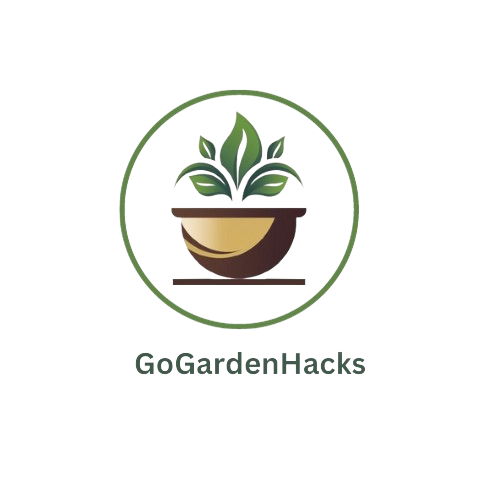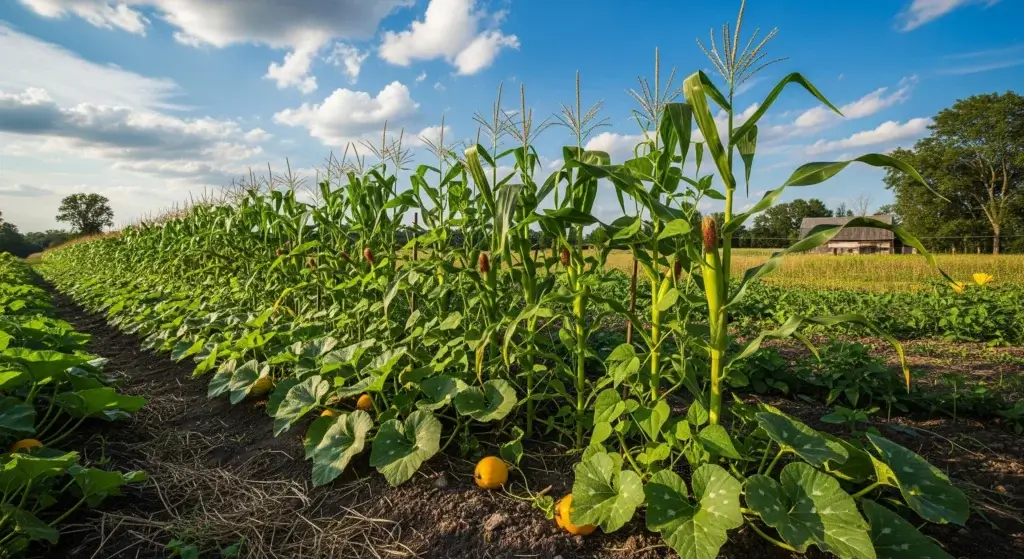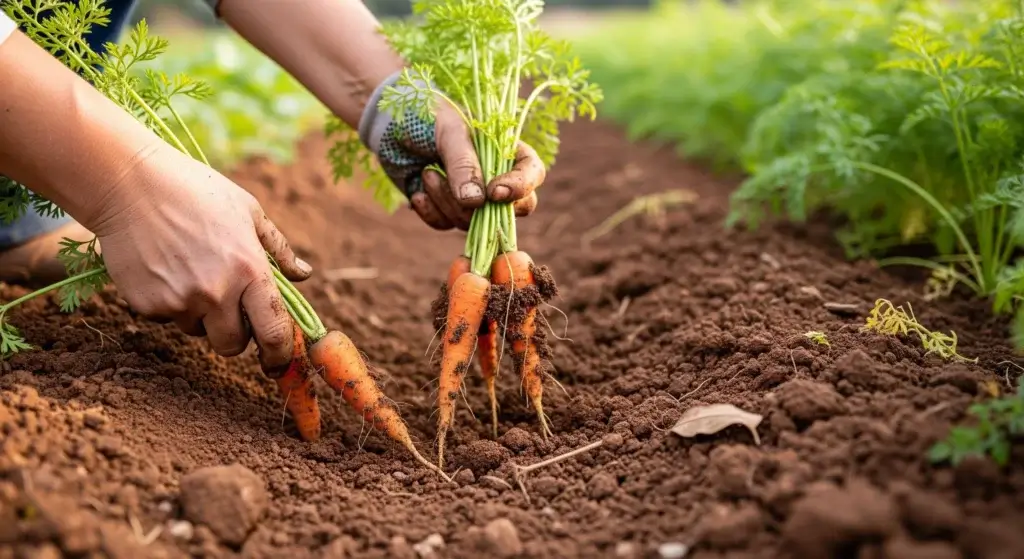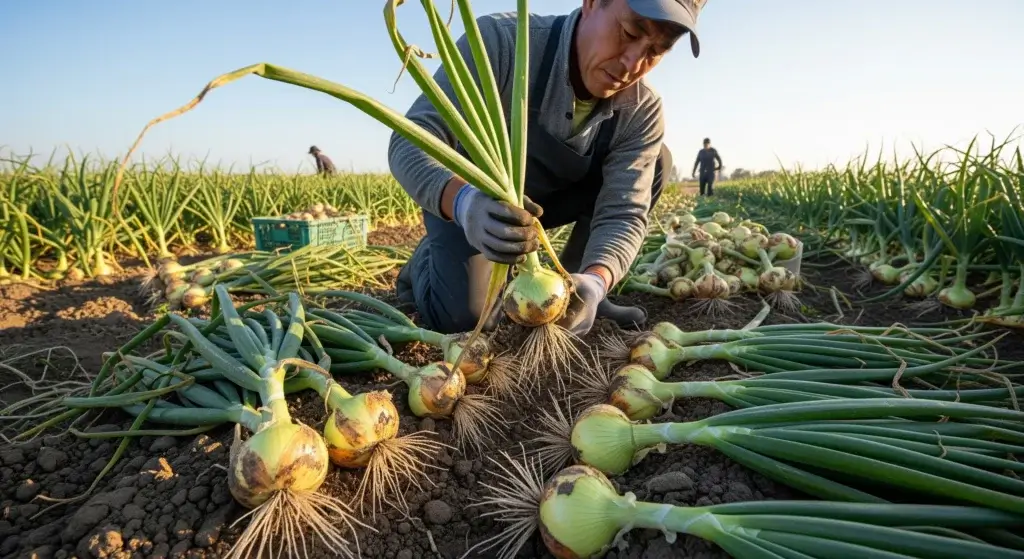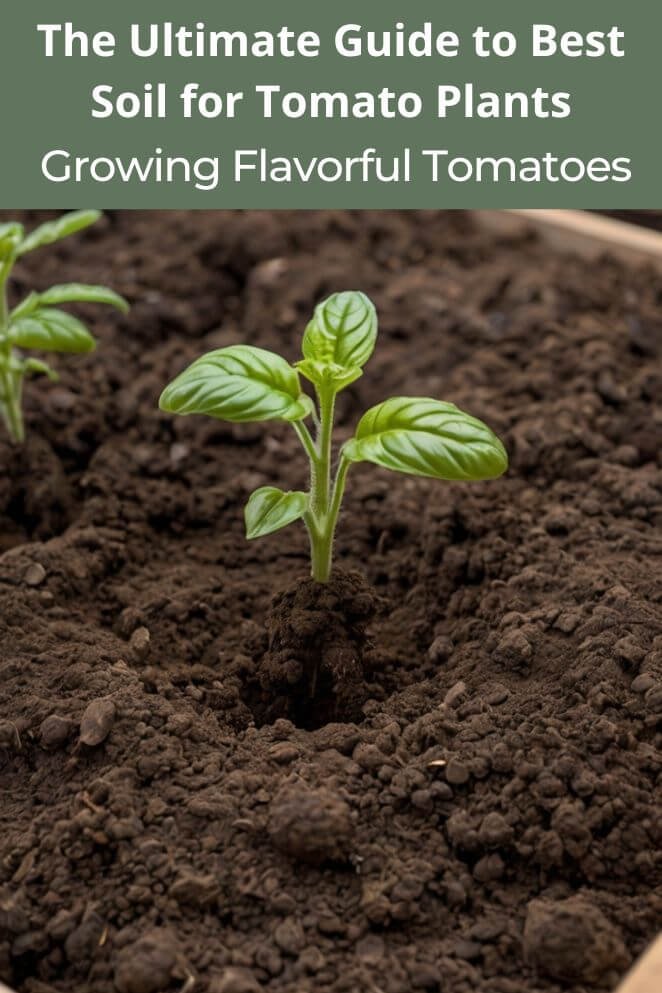
Want tomatoes so juicy they make store-bought ones taste like cardboard?
The secret’s not just sun or seeds—it’s the soil.
Think of soil as the pizza crust for your tomato party: get it right, and everything else falls into place.
Whether you’re a weekend gardener or backyard farm boss, giving your tomatoes the perfect soil VIP treatment turns “meh” plants into flavor bombs.
Let’s dig into what makes soil the real MVP for growing epic tomatoes.
Understanding Tomato Plant Soil Requirements
Tomatoes might look chill, but under the surface, they’re pretty picky about their soil.
These sun-loving plants need a soil setup that feels like a luxury condo—drainage, nutrition, and just the right pH all in harmony—to grow big, healthy, and crank out juicy fruit.
Soil texture and structure
Think of soil texture like Goldilocks: not too dense, not too sandy, but juuust right.
Tomatoes thrive in loose, well-drained soil that lets roots breathe and soak up nutrients without drowning.
The dream? Loamy soil—the perfect mix of sand, silt, and clay, like the holy trinity of dirt.
Sandy loam is especially boss because it drains fast but holds enough moisture and nutrients to keep your tomatoes happy.
Bonus: it warms up quick in spring, so you can start planting earlier.
Clay soil? Not so much.
It holds water like a sponge and can turn your tomato roots into mush city, inviting all kinds of nasty root rot.
But don’t panic—add some organic matter like compost, and you’ll turn that heavy clay into a root-friendly runway.
Drainage: The Critical Factor
Drainage isn’t just a fancy word—it’s the difference between a thriving tomato and a soggy disaster.
Tomatoes hate sitting in waterlogged soil; it invites diseases like root rot and damping-off, the plant world’s version of a bad breakup.
Want to test your soil? Dig a foot-deep hole, fill it with water, and see if it drains within 24 hours.
If it’s still a swamp party, it’s time to fix things.
Toss in organic matter, build raised beds, or get creative with drainage solutions to keep your tomato roots happy and healthy.
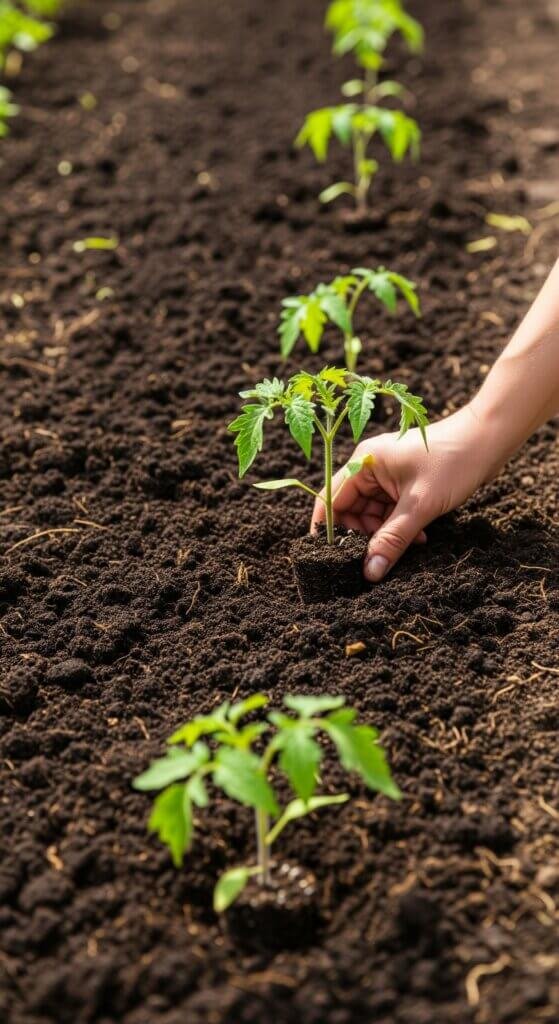
The Science of Soil pH for Tomatoes
Soil pH might sound like science class jargon, but it’s a big deal for your tomato plants.
It controls how well they can grab the nutrients they need and even how tough they are against diseases.
Tomatoes prefer their soil a little on the acidic side—somewhere between pH 6.0 and 6.8—but they’re flexible enough to handle a bit outside that range.
Why pH matters
Think of soil pH like the VIP pass for nutrients.
When pH’s off—too high (alkaline) or too low (acidic)—some nutrients, especially phosphorus, get locked out like they forgot the password.
Your tomato plants might be sitting there hungry even if the soil’s packed with goodies.
Studies show tomatoes growing in super acidic soil (around pH 4.8) end up tiny compared to those chilling in the sweet spot around 6.0.
So yeah, pH isn’t just a number; it’s a game changer.
Testing and adjusting soil pH
Want to play soil detective? The best way to know your soil’s pH is to get it tested—hit up your local extension office or grab a good home test kit.
If your soil’s too acidic, add some lime (the agricultural kind, not the cocktail).
Dolomitic lime is like a two-for-one deal, giving your soil calcium and magnesium.
If your soil’s too alkaline, bring in the heavy hitters: sulfur, peat moss, or compost to bring that pH back down.
Essential Nutrients for Tomato Plants
Tomatoes are like the divas of the garden world—they need a steady buffet of nutrients to look and perform their best all season long.
Knowing what they crave helps you set up soil that makes them sing (and fruit).
Primary Nutrients (NPK)
Nitrogen (N):
This is the leafy green fuel. Tomatoes love nitrogen for growing big, healthy leaves—think of it like their daily spinach smoothie.
But don’t go overboard, or you’ll get a jungle of leaves with zero tomatoes to show for it.
Compost, blood meal, or even crushed eggshells can keep nitrogen levels just right.
Phosphorus (P):
The root and flower whisperer. Phosphorus helps tomatoes build strong roots and encourages those blossoms to turn into tasty fruit.
If your soil’s low on phosphorus, it’s like sending your tomato on a road trip without gas—no go.
Science peeps say about 150 pounds per acre of P2O5 does the trick when levels are low.
Potassium (K):
The all-around plant bodyguard.
Potassium boosts fruit quality, helps tomatoes fight off diseases, and keeps water flowing like a pro athlete’s hydration plan.
It’s what helps your tomatoes look good and last longer on the vine—and in your kitchen.
Secondary and micronutrients
- Calcium: The superstar that prevents blossom end rot, AKA the dreaded tomato zit. Without enough calcium, your tomatoes throw a tantrum right before harvest.
- Magnesium: The chlorophyll MVP, powering photosynthesis and keeping your tomato leaves green and happy.
- Micronutrients (Iron, Manganese, Zinc): These might be small players, but they’re essential for everything from energy production to enzyme activity.
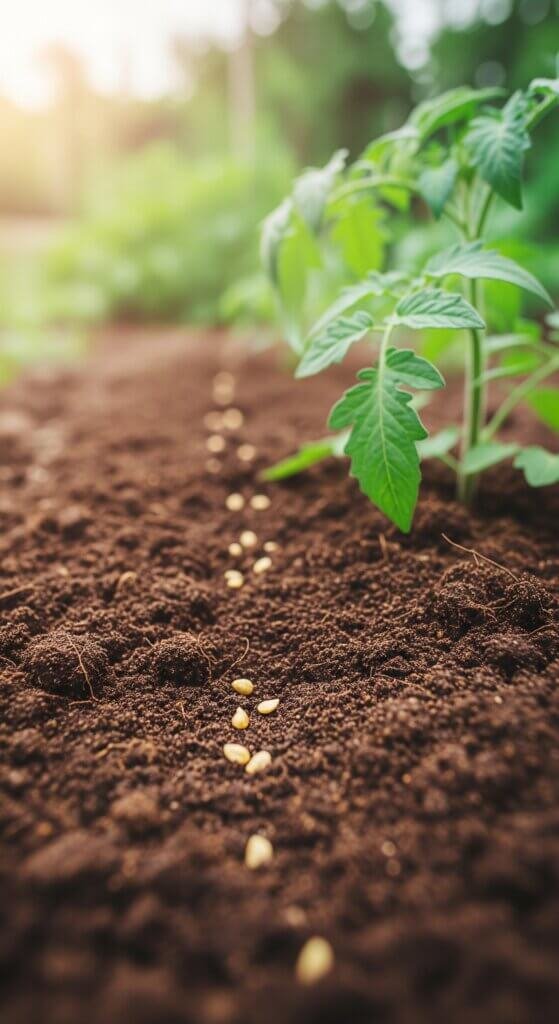
Organic Matter: The Secret Ingredient
Think of organic matter as the ultimate multitasker in your tomato soil—it boosts nutrients, keeps water in check, and makes your soil structure dance like it’s at a garden party.
If soil were a recipe, organic matter would be that secret ingredient everyone swears by.
Types of organic matter
- Compost: The rockstar of organic matter. Good compost is dark, crumbly, and smells like earth’s version of a spa day.
- Aged manure: This stuff is like a slow-release energy drink for your soil—packed with nutrients but gentle enough not to freak out your tomatoes.
- Leaf mold: Decomposed leaves that work wonders, especially for heavy clay soils. It’s like a moisture magnet and soil conditioner rolled into one.
- Peat moss: Great for holding water and fluffing up soil, but treat it like that mysterious character in a show—use sparingly.
Commercial Soil Mixes vs. Homemade Blends
When growing tomatoes in containers or raised beds, you’ll need to decide between purchasing commercial soil mixes or creating your own blend.
Each approach has advantages and considerations.
Commercial soil mixes
These are your garden’s “ready-to-eat meals.”
High-quality mixes often pack natural goodies like bat guano, fish meal, or earthworm castings—basically gourmet fuel for your tomatoes.
Just watch out for mixes loaded with peat moss or coconut coir, which can turn your soil into a soggy mess, or time-release fertilizers that don’t always match what your tomato needs when it needs it.
Creating your own soil mix
Feeling hands-on? Mix your own blend like a pro chef:
- 40% quality topsoil or garden soil
- 30% compost or well-aged manure
- 20% coarse sand or perlite for drainage
- 10% additional organic matter (leaf mold, coconut coir, or peat moss)
This combo gives your tomatoes the perfect balance of drainage, nutrition, and soil texture—and you get full control to tweak it based on your garden’s personality.
Container Growing: Special Considerations
Growing tomatoes in containers? Cool, but heads up—it’s not the same game as planting in the ground.
Container soil is like that friend who dries out quickly and needs constant snacks. Plus, your tomato roots are basically on a diet with limited space to stretch.
Container soil requirements
Your tomato’s home in a pot has to drain well but still hold enough moisture and nutrients—kind of like Goldilocks finding the perfect porridge.
And since tomatoes are root hogs (especially the indeterminate types), pick containers at least 20 gallons for the big guys and 10-15 gallons for the bushy determinate ones.
Garden soil? Nope.
It’s too dense and drains like a clogged sink.
Instead, go for high-quality potting mix or DIY with equal parts compost, peat moss (or coconut coir if you’re feeling fancy), and perlite or vermiculite for that airy, breathable vibe.
Container soil management
Containers need more love and attention—check moisture daily, especially when the sun’s playing hard to get.
Your tomatoes will want more water than their ground-grown cousins.
Toss in some slow-release organic fertilizer so they get steady snacks all season long.
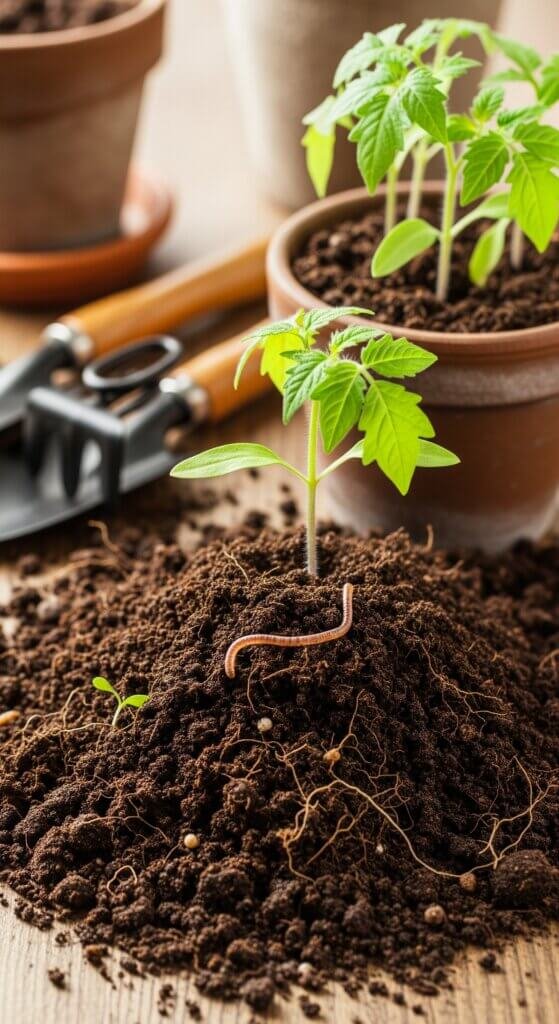
Soil Preparation Techniques
Start prepping your soil 2-4 weeks ahead of planting. This gives your amendments time to settle in like a comfy couch.
- Test first: Grab a soil test to check pH, nutrients, and organic matter.
- Fix what’s off: Need to raise pH? Add lime. Too acidic? Sulfur’s your friend. Compost for organic oomph, and tweak nutrients as needed.
- Dig in: Work your soil 8-12 inches deep and mix those amendments evenly. Raised beds are bonus points if drainage or warming is an issue.
Troubleshooting Common Soil Problems
Even the best soil plans can hit a snag. Here’s how to read the signs:
- Compacted soil: Water pools, roots suffocate, plants look sad. Fix by adding organic matter, don’t work wet soil, or build raised beds next season.
- Nutrient deficiencies: Yellow leaves? Nitrogen might be MIA. Purple-ish leaves? Phosphorus is probably ghosting your plants. Feed with organic fertilizers or compost ASAP.
- pH Problems: If your plants look hungry despite feeding, check pH. When it’s way off, nutrients lock up tighter than a Netflix password.
Conclusion
Alright, here’s the quick-play version: Great tomato soil is like the ultimate power-up—good drainage, balanced nutrients, perfect pH, and lots of organic love.
Treat your soil right, and your plants will grow like champs.
Think of soil care like leveling up in a game: test, tweak, compost, repeat.
Whether in pots, raised beds, or the ground, these basics stay the same.
Nail your soil, and your tomatoes will reward you with juicy, flavor-packed wins—like unlocking the final boss of home gardening.
So grab your gardening gear and let those tomatoes flex their flavor muscles!
